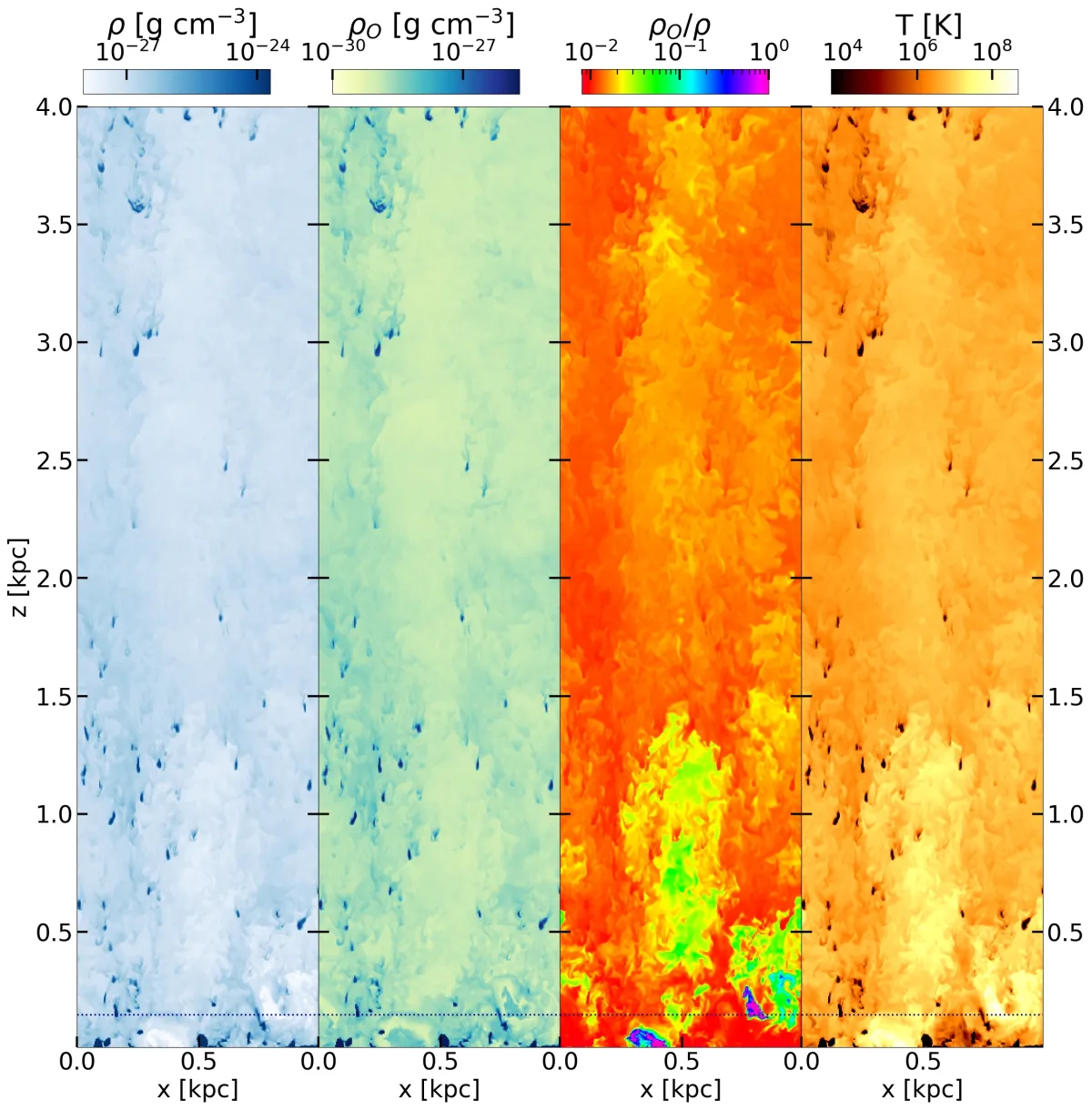Simulated observations of galactic wind metal loading
The goal of this project is to build a software pipeline that can take simulations of galactic winds, such as the one shown in the figure, and make simulated observational images from them that can be compared directly to telescopic data.
Research themes
Project status
Content navigation
About

Galactic winds are huge flows of matter driven out of the discs of galaxies by feedback from star formation and black hole accretion. Winds play a decisive role in shaping galaxy evolution; without them, our Milky Way would be much more massive than we actually observe, and would likely have already exhausted its supply of gas and transformed into a “red and dead” passive galaxy. One of the most important but least understood roles of winds is that they transport the heavy elements (“metals”) synthesised in stars out of galaxies and into circumgalactic and even intergalactic space; this process is so efficient that, while almost all the oxygen atoms in our Galaxy were made in the Galactic disc, today roughly half of those atoms reside in the diffuse halo around our Galaxy rather than in its disc.
Despite this indirect evidence for strong metal flows in galactic winds, quantitative measurements of the metal content of winds, their “metal loading”, have proven frustratingly difficult. This is at least in part because metals are potentially carried by many different phases of gas — cool neutral material at temperatures ~ 7000 K, warm ionised gas at ~10,000 - 20,000 K, and hot ionised gas at > 10^6 K — and each phase requires its own observational techniques with a unique set of biases and uncertainties, making it difficult to assemble a unified picture. Here high-resolution simulations can be of great assistance, since they can make predictions for how these different phases are related to each other in space and time, and how metals are distributed between them. For these simulations to be maximally useful, however, we must use them to carry out simulated observations of what our telescopes will see, so that we can understand the biases and limitations of our measurements. The goal of this project is to build a software pipeline that can take simulations of galactic winds, such as the one shown in the figure, and make simulated observational images from them that can be compared directly to telescopic data. This comparison can then be used to interpret existing observations, diagnose blind spots and biases, and plan future observational studies that will provide better constraints on metal flows in galactic winds.
Relevant papers:
https://ui.adsabs.harvard.edu/abs/2023MNRAS.521.5972W/abstract
https://ui.adsabs.harvard.edu/abs/2021MNRAS.504...53S/abstract

